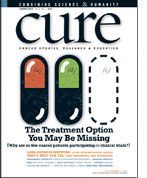Phases of Clinical Trials
Understanding the different phases of clinical trials.
Although the Food and Drug Administration approves new cancer drugs each year, the process of testing and approval is lengthy and complex. Most clinical research of a new drug progresses in an orderly series of steps called phases.
Phase 1 trials enroll a small number of patients and evaluate how a new treatment should be given (for example, orally or injected into the bloodstream or muscle), how often it should be administered, and the most effective dose with the fewest and least severe side effects. The primary goals of phase 1 trials are studying side effects and establishing a safe dosage.
Phase 2 trials continue to test the safety of a treatment and also begin to evaluate how well it works. These trials are usually limited to a specific cancer that showed benefit with the treatment in earlier trials.
Phase 3 studies test an experimental drug, combination of drugs, regimen of radiation therapy, or surgical procedure in comparison with the current standard. Enrollment is often in the thousands across multiple locations. Typically, a participant is randomly assigned to the standard treatment or the new treatment (called randomization). Patients who are not randomized to the experimental treatment receive the best standard treatment available.
Adapted from CURE’s 2010 Cancer Resource Guide, available at www.curetoday.com/cancer_resource_guide.
